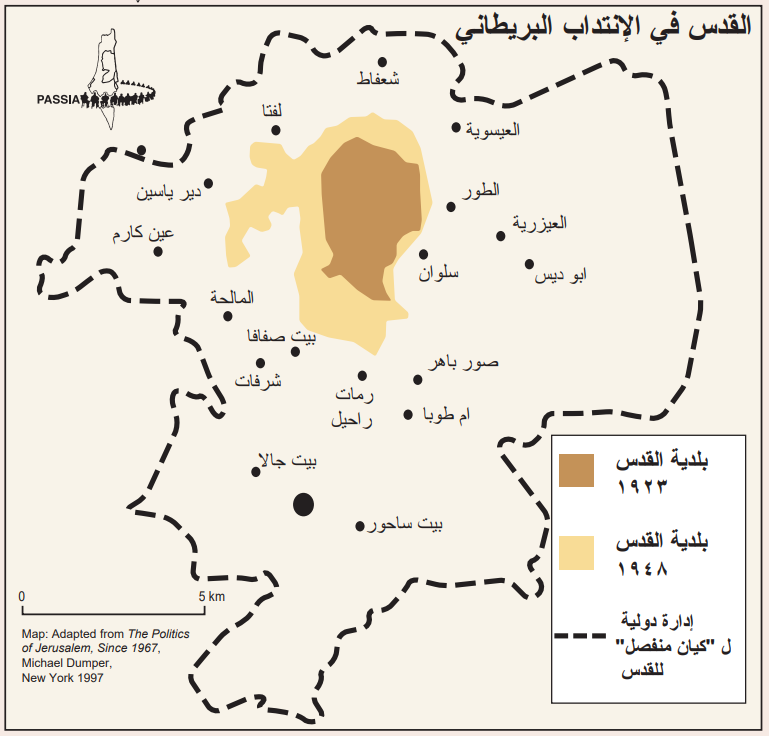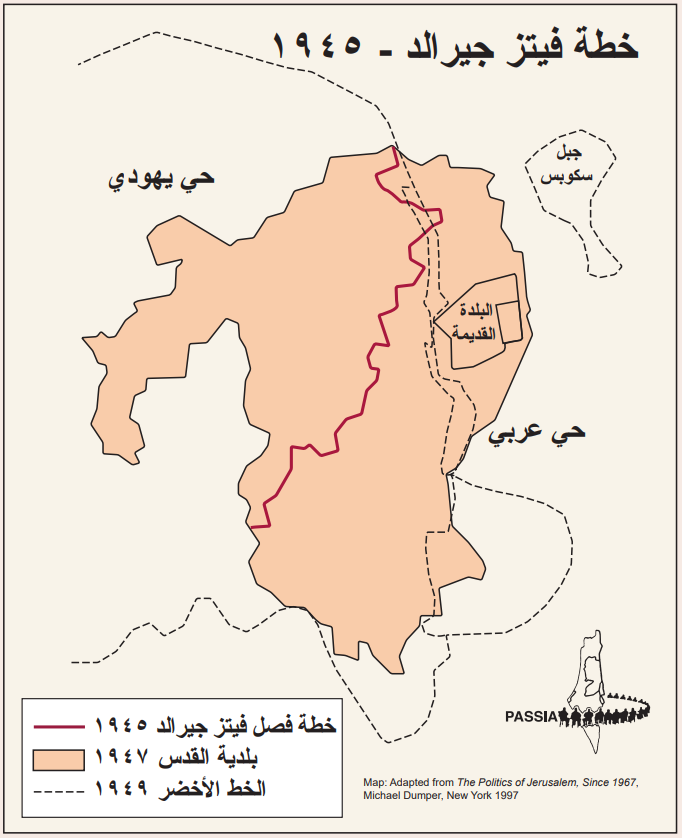British Mandate
The Arab-British alliance (Sharif Hussein's correspondence with McMahon) came in 1915 to pave the way for the" entry " of British General Edmund Allenby into the city of Jerusalem in October ,1917 and the establishment in Jerusalem of the first administrative and political capital of the British Mandate government, declaring“Now the Crusades are over”
Ronald Storrs was appointed the first military governor of Jerusalem, Herbert Samuel the first high commissioner, Haj Amin al-Husseini was appointed to the post of Mufti of Jerusalem, Musa Kazem al-Husseini was dismissed, and Ragheb Al-Nashashibi was appointed in his place as mayor of Jerusalem. And the beginning of planning projects for Jerusalem and the holy places to redraw the geography and demography of the city!
The British royal commission, headed by Lord Bell, which was tasked to investigate the causes of unrest in Palestine (revolution 1936) and to indicate how to implement the obligations of the mandatory state (Britain) towards Arabs and Jews, recommended the division of Palestine into two states, one Arab including Transjordan and the other Jewish, and the holy places remain under the British mandate, unless both the league of nations and the United States wish to terminate it, and the committee recorded that the division of Palestine is subject to a basic condition, which is “to preserve the sanctity of the cities of Jerusalem and Bethlehem and secure access to them freely and reassurance to whomever wants from all over the world”. As for their borders, they should extend from a point north of Jerusalem to a point south of Bethlehem, and that this area should be connected to the sea by a corridor extending to the north of the highway and to the south of the railway, including the cities of Lod and Ramle and ending in Jaffa.the committee proposed that the city of Nazareth and Lake Tiberias should be included in this area. Sir William Fitzgerald, Chief Justice of the Supreme Court of Palestine, prepared a plan for the Jerusalem municipality in general called The “Kasbah plan”, i.e. a town with a municipal council formed “by special patent” to preserve the unity of the city.he proposed the establishment of separate Arab and Jewish councils with a degree of autonomy for the neighborhoods concerned. a British administrative council consisting of (11) a member would supervise the elected councils and monitor issues related to common areas and holy sites.
Jerusalem is not divisible by itself, but provide a map of sectoral divisions along the lines of the administrative district (the Jewish Quarter is located northwest of the Old City) and the Arab quarter extends from North to South, with the Old City as its center.



